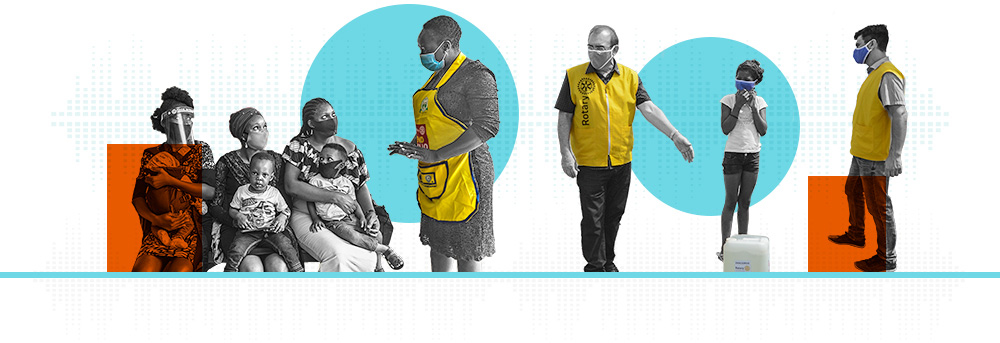
Tim Ryan
By Tim Ryan, a member of the Rotary Club of Toledo, Ohio, USA
I was in Abuja, Nigeria, last month as part of a team taking part in National Immunization Days (NID). I danced with nurses at lunchtime. I had lots of fun. I did not want to leave.
The entire team met committed doctors, saw lots of polio victims (mostly children), and took many photos. Experience has shown that by aiding polio victims from the local infected communities, Rotarians help the families become the best advocates for polio immunization.

A child’s fingernail is marked with purple dye during an immunization drive in India last year. The dye indicates the child has received the polio vaccine. Photo by Ritam Banerjee
With this in mind, Indian Rotarians sent a medical team of physicians and other support, all working for free to perform polio-corrective surgery on children. The goal was 300 children, but the actual number was more than 500. These Rotarians put in long, long hours. The Nigerian government provided facilities at two hospitals in a MASH type environment. All services and costs were keep to an absolute minimum. These children would not have received such care without the substantial support of Rotary. The Indian doctors were also training their Nigerian counterparts.
Last year, I also took part in a NID trip to India. Comparing the two, many things were the same. The Rotarians, healthcare workers and government workers were equally committed and hard working. But there were some important differences. In India, mothers seemed to be dragging their kids to us for vaccination. In Nigeria, we were generally accepted, but a significant number of people refused to allow their kids to be immunized. I was told that, they thought, the vaccinations were a plot to sterilize their children. It is a very big problem.
Sadly, while there, we learned that there was a polio victim in Abuja. Statistically, that means there are 200 other people who caught the virus and may not know it. The area needs to be flooded with vaccine.
I observed the seriousness of the Nigerian response. The government, Nigerian Rotarians and others jumped into action. Many of our fellow Rotarians are volunteering four days or more a month. They could not have been more focused, committed and determined. When I am in the States, I forget that there are two sides to this equation; what we do to bring awareness and raise money and what Rotarians in infected countries do to make it happen.
I am glad I went to Nigeria. I am proud that my team vaccinated thousands of children. It was a lot of work for the team and the healthcare workers. It really was Rotary in action.
- Read more posts from this trip
- Learn more about Rotary’s efforts to eradicate polio
- Be part of the effort to make the World’s Biggest Commercial at www.endpolionow.org

Rotary, the way to be…
LikeLike
Great Article! There are those who question the committment/effectivness of Rotary International’s “End Polio Now” campaign. People like Tim Ryan prove them wrong!
LikeLike
I am a Rotarian from Napier, New Zealand. My wife and I will join 27 others in a group organised by Rotarians in Florida. We came together through Yahoo Groups.
An international group off to join the NID in India during February. An opportunity to see where the money earned by millions and millions of Rotarians over 25 years has gone before we finally put our foot on the throat of Polio.
Well done Tim, well done Rotary.
LikeLike
Pingback: Two sides to the polio eradication effort | Warsaw Rotary , Club 3393, District 6540
BRAVO FOR YOUR WORK AND YOUR ENTHUSIASM.
LikeLike
I am a Rotarian from Argentina, District 4835. I was a GSE team member to Nigeria in April 2012 and I saw people who were victims of polio,I saw the effects of the illness on them. It’s really valuable what Tim and the medical team did in Nigeria, please keep working and let people know how Rotary cooperates with such issues. we will continue with our donations for the cause. congratulations!
LikeLike